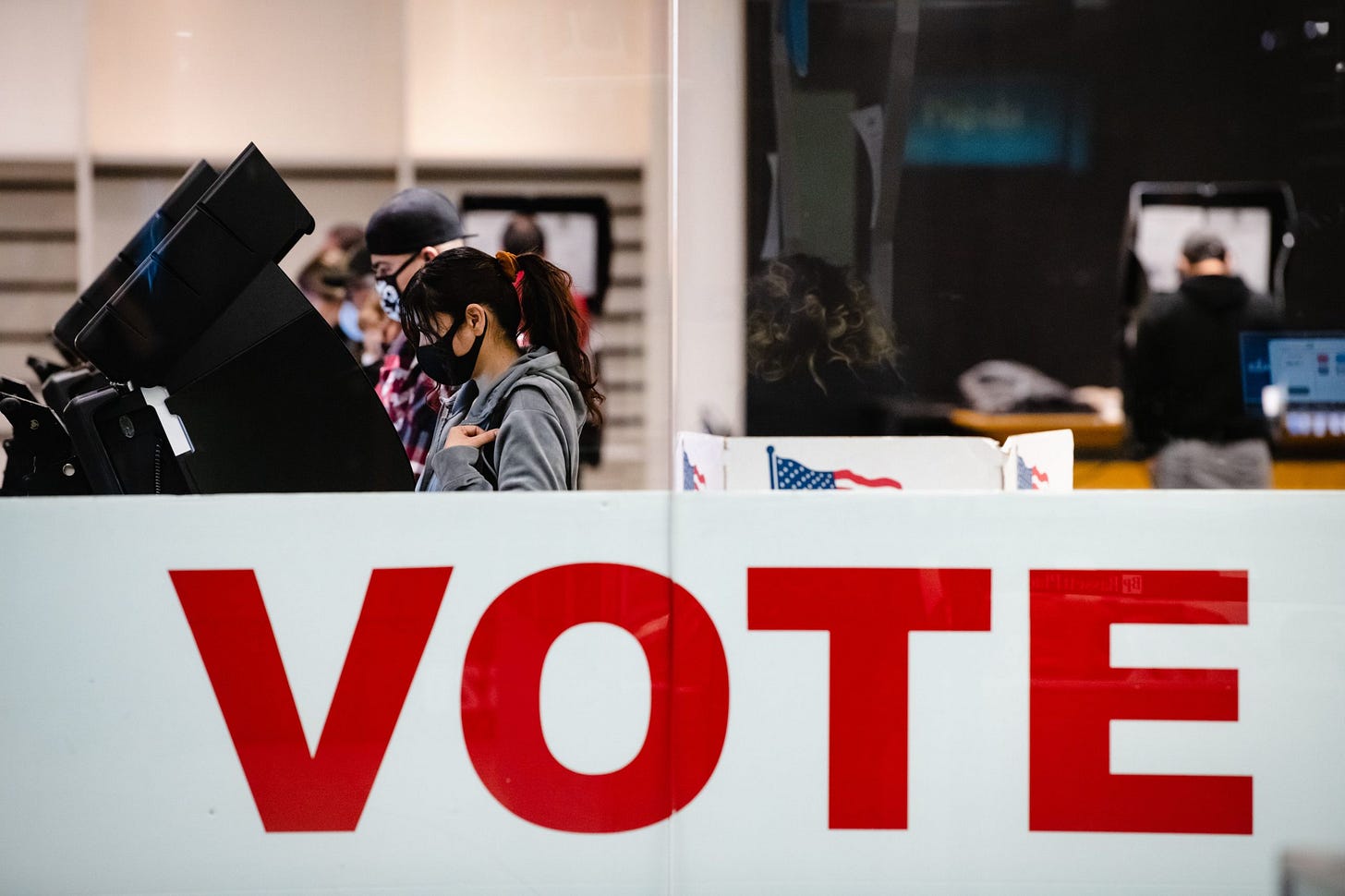How the Texas Election Law Suppressed Voting
40 percent of mail-in ballot applications rejected. 13 percent of actual mail-in votes rejected. What just happened in Texas?

Everything’s bigger in Texas. And that’s more than just our tourist slogan. It’s also the way we restrict people’s freedom to vote!
Last year state Republican lawmakers decided to address Texas's so-called “election integrity” problems, which had been raised by Donald Trump’s mere 600,000 vote victory in 2020. Never mind that the integrity of Texas elections was not in question. And that there’s never been credible evidence of widespread voter fraud in Texas. And the 2020 presidential election was deemed “safe and secure” by state elections officials.
Donald Trump had said that he was cheated in the 2020 election and he must have been cheated everywhere and so by God, the good people of Texas were going to fix the problem.
And what has happened since is a cautionary tale.
Texas’ Senate Bill 1—the omnibus “election integrity” bill—was signed into law by Gov. Greg Abbott last September. Its most important change was the creation of a complicated set of requirements for first the mail-ballot applications and then the mail-in ballots themselves.
The law requires voters who qualify to vote by mail to provide an ID number with their ballot application and on their ballot carrier envelope. The challenge is that voters have to know what form of identification they provided when they first registered to vote. The Secretary of State’s office also failed to provide guidance to county officials and voters concerning implementing the ID requirements until the election process for the March 1st primary was well underway.
The result was a large number of rejected ballots.
Election officials in urban and rural counties alike reported initially rejecting roughly 40 percent of mail ballot applications due to issues concerning the new ID requirements. And voters who were able to overcome these obstacles to obtain their mail ballots still faced a historically high likelihood of rejection due to the implementation of the new ID requirements for mail ballot carrier envelopes.
An Associated Press review of election results in 187 of Texas’ 254 counties revealed that nearly 23,000 ballots were ultimately rejected during the March 1 primary election. Roughly 13 percent—or 1 of 8—mail-in ballots were rejected. For comparison, in the 2020 election in Texas, the rate of rejection for mail-in ballots was just 1 percent.
The historically high rejection rate crossed geographic and party lines. Bexar, Collin, Denton, El Paso, Harris, Hidalgo, and Williamson counties—a cross-section of red, blue, and purple—all experienced rejection rates higher than 10 percent. In Denton and Harris counties, Republican primary voters’ ballots were rejected at a higher rate than Democratic primary voters.
Not only was mail-in voting disrupted in Texas, but expanded threats of prosecution and the hyperpolarization of our political climate also made the recruitment and retention of poll workers challenging in counties across the state. And then, when the Texas Secretary of State should have been focused on implementing the new law, the office’s time and resources were sucked up by a review of the 2020 election.
Spoiler: Donald Trump still won. So did the Republican candidate for Senate. So did the three Republicans running for the State Supreme Court. This may shock you, but the original results of the 2020 election in Texas were exceedingly good for Republicans. And after a partisan and unneeded review, the results were . . . still exceedingly good for Republicans. The review confirmed what state officials had been saying all along: The election had been accurate, safe, and secure.
Yet on the eve of Texas’ primary elections this March, state interpretation of the new voting law was still evolving. Handbooks for election judges and new forms were issued only in the final days before the election, long after training had been provided to thousands of presiding judges and election workers and early voting was underway. And the state's new online systems mandated by law and designed to provide transparency to the voting process, including a required ballot tracking and cure system, took months to stand up and weren't fully operational as voters and officials were directed to utilize them.
No wonder voters were confused.
What happened in Texas should be a cautionary tale for those who care about democracy and our citizens’ sacred right to vote.
Luckily, not every state has followed Texas’s path. This year the Florida legislature considered similar provisions that would have complicated voting by mail for many Floridians. After local election officials spoke up and made clear that these new provisions would only needlessly complicate Florida elections, legislators quickly removed them. Florida legislators were right to heed the advice of their local election officials to avoid the mess that happened in Texas. Still, there’s ample evidence that other states’ are obsessed with making it harder to vote, all under the guise of “election integrity.”
Maybe the Texas legislature will address the problems it created when they convene again in 2023. Or maybe they won’t. That will be a test of whether what happened in Texas was a sloppy, ill-considered attempt at political pandering or an intentional attempt to make it harder for Texans to vote.

